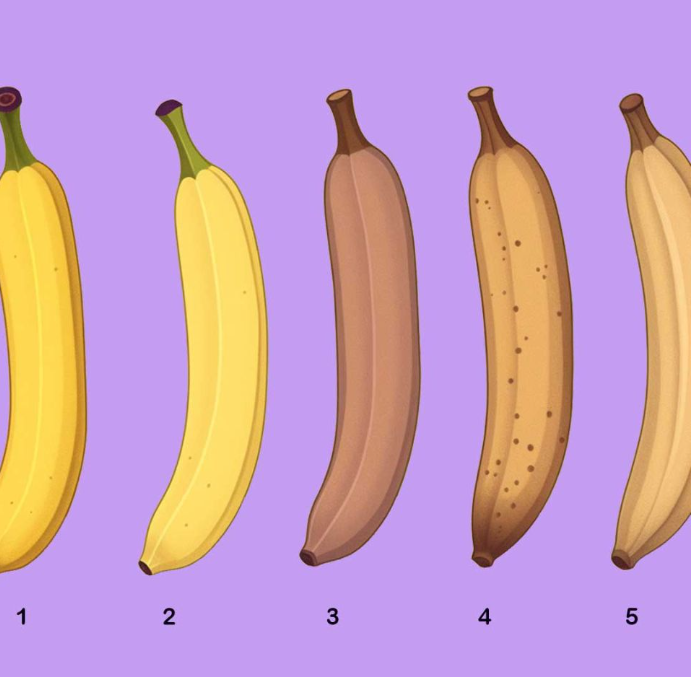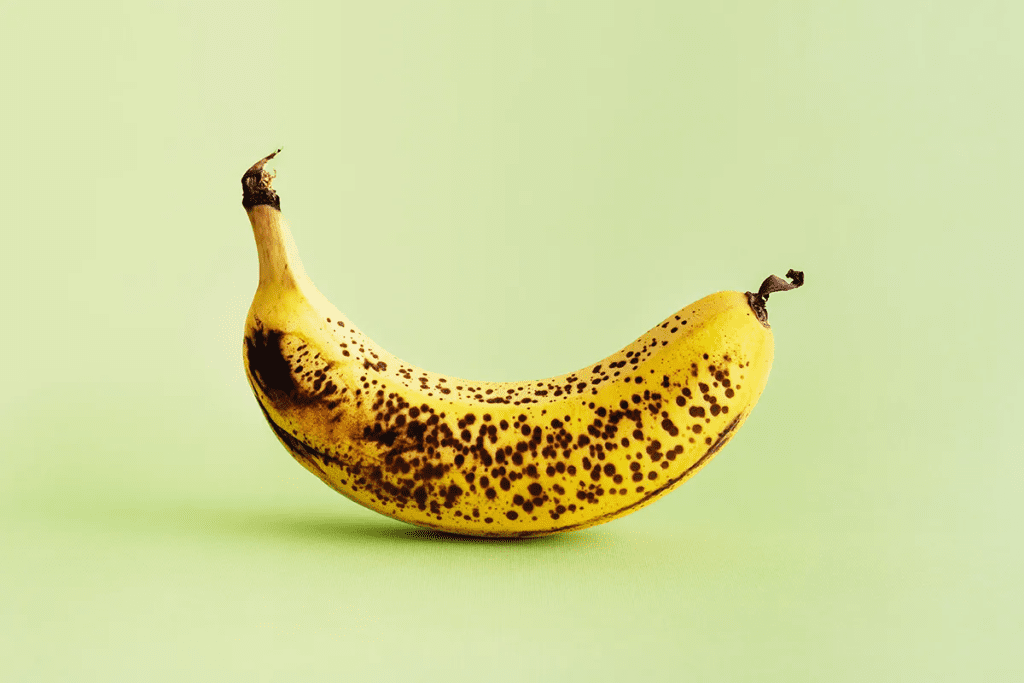Bananas, one of the most popular fruits around the world, offer more than just a convenient snack. They go through a remarkable transformation, from green to brown, with each stage providing different flavors, textures, and health benefits. So, when you’re staring at the banana pile, do you go for the firm green one or the soft brown one? The banana you choose may have more impact on your health than you think. Let’s explore the different stages of a banana’s life and how each one can influence your well-being.

1. Young and Green Bananas: Full of Resistant Starch
Appearance: At this stage, bananas are a vibrant green color, with a firm texture.
Taste: Green bananas are not particularly sweet. Instead, they are starchy and slightly tangy, offering a mild flavor that’s quite different from the typical banana taste.
Nutritional Profile: Green bananas are packed with resistant starch, a type of carbohydrate that acts more like fiber than sugar. Resistant starch is harder for the body to digest, meaning it doesn’t cause a spike in blood sugar levels, making it a great choice for people managing their weight or those with diabetes. It also helps promote gut health by feeding the good bacteria in your digestive system. Additionally, green bananas are rich in potassium and vitamin C, providing important nutrients that support heart health and immune function.
Best for: Weight management, blood sugar control, and digestive health.
2. Firm and Yellow Bananas: The Classic Choice
Appearance: As bananas ripen, they turn a bright yellow and remain firm to the touch.
Taste: Firm and yellow bananas offer the iconic banana flavor—sweet but still slightly starchy.
Nutritional Profile: At this stage, bananas strike a balance between their starch and sugar content. They provide a moderate amount of natural sugar, which gives you a quick energy boost without overwhelming your blood sugar levels. The fiber in yellow bananas helps keep you feeling full longer, and the potassium content makes them ideal for replenishing electrolytes, especially after exercise. Plus, they are easy to digest, making them a popular choice for many people.
Best for: A quick energy boost, moderate sugar intake, and everyday snacking.
3. Spotted Yellow Bananas: Sweet and Creamy

Appearance: Yellow bananas with brown spots are a sign of increased ripeness.
Taste: At this stage, bananas become much sweeter, with a soft and creamy texture that melts in your mouth.
Nutritional Profile: Spotted bananas have a higher sugar content, as the starches continue to break down into simple sugars during the ripening process. These bananas are easier to digest, making them a good option for people with sensitive stomachs. Despite the higher sugar levels, spotted bananas still provide a decent amount of fiber and potassium, ensuring you get essential nutrients alongside a natural sugar rush.
Best for: Quick energy, easy digestion, and a naturally sweet snack.
4. Brown and Soft Bananas: Natural Sweetness at Its Best

Appearance: By this stage, bananas have a mostly brown skin and feel soft to the touch.
Taste: Brown and soft bananas are incredibly sweet, with an intense banana flavor that is ideal for use in recipes like smoothies, banana bread, and muffins.
Nutritional Profile: Overripe bananas are packed with sugar, which makes them perfect for naturally sweetening recipes. While some people may shy away from the mushy texture, others appreciate that these bananas are even easier to digest. In fact, they can be soothing for individuals suffering from heartburn or digestive discomfort, thanks to their low acidity and soft texture. They retain their high potassium levels, which can help regulate blood pressure and support muscle function.
Best for: Natural sweetening in recipes, heartburn relief, and gentle digestion.
5. Brown and Overripe Bananas: Baking Gold

Appearance: Completely brown or blackened bananas are extremely soft and sometimes ooze a bit of liquid from the skin.
Taste: These bananas are as sweet as they come, with a concentrated banana flavor that’s ideal for blending or baking.
Nutritional Profile: While brown bananas may not be the first choice for eating on their own, they are a fantastic addition to your kitchen. Their high sugar content makes them perfect for naturally sweetening smoothies, muffins, and pancakes without the need for added sugar. They retain their nutrient value, particularly potassium and vitamin B6, making them a nutritious ingredient for many baked goods. Plus, these bananas are even more digestible for those with sensitive stomachs.
Best for: Baking, smoothies, and natural sweetening in recipes.
Choosing the Right Banana for Your Health Goals
So, which banana should you choose? It all depends on your specific health goals and preferences. Each stage of a banana offers unique benefits:
- For Weight Management: Green or firm yellow bananas are your best friends. The resistant starch and lower sugar content can help keep you full longer, while keeping blood sugar levels stable.
- For Quick Energy: Spotted yellow bananas provide an instant energy boost, thanks to their higher sugar content. They’re perfect for pre-workout snacks or when you need to refuel quickly.
- For Digestive Health: Green bananas are excellent for gut health because of their resistant starch, while overripe bananas can be gentler on the stomach for those dealing with digestive issues like heartburn.
- For Sweet Treats: If you’re looking to satisfy your sweet tooth without added sugars, brown and overripe bananas are the way to go. They’re perfect for baking, adding natural sweetness to recipes like banana bread, or blending into smoothies for a delicious treat.
Conclusion: Your Banana Choice Matters

The humble banana is more versatile than you might think, with each stage of ripeness offering different flavors, textures, and health benefits. Whether you’re aiming for better digestion, managing your weight, or just looking for a quick energy boost, the banana you choose can make a difference. By understanding the unique benefits at each stage of ripeness, you can make informed choices that align with your health and culinary needs.
So next time you’re reaching for a banana, take a moment to consider: which stage is right for you? Whether it’s green and firm or brown and mushy, your choice could impact your health more than you realize.


